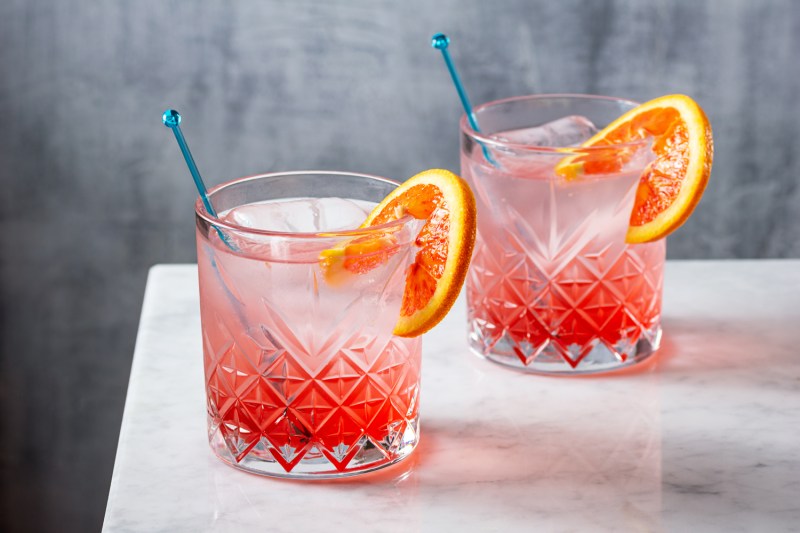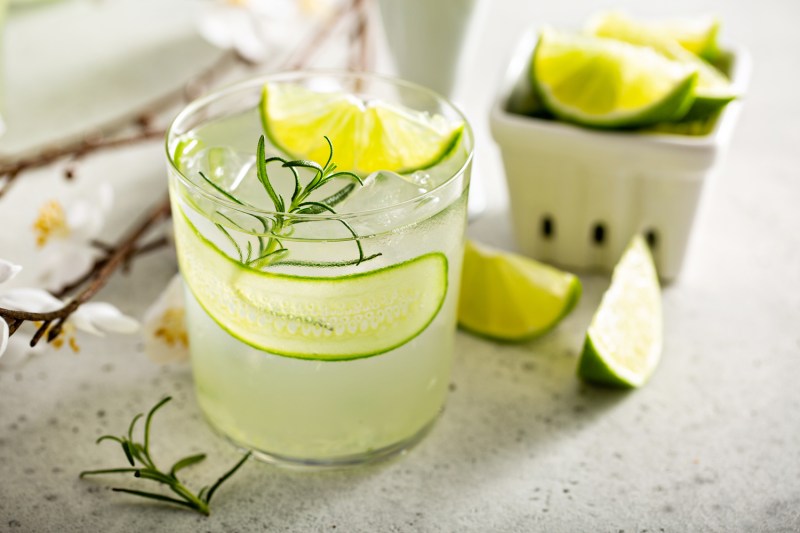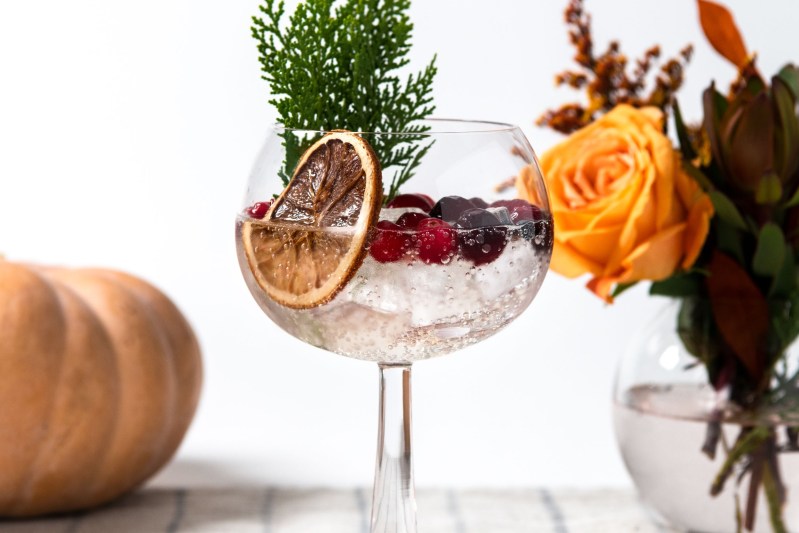First, gin was an overlooked and underrated spirit. Then came the renaissance, elevating the clear alcohol into higher ranks, thanks to a reboot of classic cocktails and more quality producers than ever. Now, the industry is not only making gin regional but seasonal as well.
Things are looking up for the aromatic spirit. Deft producers are putting their geographical stamp on the stuff, adding things that grow right in their backyard. There may be no better example of that than Gray Whale Gin out of California. The brand sources Big Sur juniper, limes from Temecula, fir from Sonoma, and more in its very Golden State-ified offering. How do you go one step further? Make it seasonal, of course.

Producers today are looking to leverage fresh produce and other ingredients to make their gin batches even more intriguing. It’s a push towards seasonality that we’re more accustomed to seeing in restaurant menus. Let’s take a look at why gin, in particular, might be the best candidate for the job and where this is all headed.
Why Seasonality?
Of all the spirits, going the seasonal route may make the most sense with gin. The list of botanicals involved is on par with the involved recipes of many of our favorite amari or with the hop bills for the most complex IPAs out there. In other words, there’s a lot that goes into the stuff to give it nuance and make it stand alone, from coriander and anise to different combinations of citrus or even something like almonds or seaweed. With this kind of flexibility and our engrained interest in feasting (or sipping) on what’s fresh and in season, it’s shocking that gin didn’t go this route years ago.
Geoff Curley is the founder of Gin Lane 1751. The brand launched its seasonal series called the “Victorian Garden” last year, hitting the U.S. market in the summer with a refreshing watermelon, mint, and cucumber option. While many flavored gins are sweetened, this one includes no added sugar — just in-season ingredients. “We are among the first producers to showcase how gin can capture the essence of each season through fresh fruits and botanicals,” he says.

“It’s exciting to see people embrace the notion that gin can and should be enjoyed year-round, and the seasonal flavor category has contributed significantly to this awareness,” Curley adds. “As delicious and timeless as Martinis and Gin and Tonics may be, people no longer feel confined to the classics and instead feel a new wave of inspiration from seasonal gin options.”
What Can We Expect?
Think of gin as a dish that remains similar and familiar at its core but morphs seasonally to stay relevant and of that particular time of year. That dish might be a bit heavier and creamier in the winter, brighter in the spring, more spritely in the summer, and add a little more heft come fall. Look for gin to start wearing the season it’s released in on its sleeves (or label). Here’s what we’re likely to see.

Winter
Winter is citrus season, and there’s hardly a better complement for most spirits. Gin, with all its herbal, piney, and spicy notes, can be counterbalanced wonderfully with the addition of blood orange, tangerine, kumquat, quince, and more. And we’re not just talking about simply flavoring gin just prior to bottling here. Producers can craft the batch from the get-go with these ingredients, co-fermenting with fruit and taking advantage of the many flavors and textures the juice, pulp, and peels can impart.
Spring
Gin tends to remind of spring, as it’s so aromatic it tends to explode from the bottle like the year’s first bloom. We’re likely to see a host of producers harness the power of the many green and flowery things coming to life, many of which can add some extra depth to a good gin. Last year, Kentucky distillery Castle & Key released a spring gin made with floral botanicals like rose petal (along with things like green peppercorn, green cardamom, licorice, and almond). Others have followed suit, like Short Path Distillery out of Massachusetts. Their latest spring release was made with myrtle, lemongrass, jasmine, dandelion root, and other spring bloomers.
Summer
Summer gives and gives. On the one hand, it’s prime herb season, with things like dill, coriander, basil, and more wanting to get in the mix. On the other hand, the garden is starting to deliver, hence seasonal releases like the watermelon, mint, and cucumber gin above. There are countless berries to work with this time of year, along with savory items like specialty onions that could lend to a Martini-like batch of seasonal gin. Further, stone fruit can be found everywhere and pair wonderfully with gin. Think strawberries, peaches, cherries, and apricots. We like ginger’s warming influence in the winter, but it’s actually freshest in the summer.
Fall
It’s the harvest season, so think of orchard and vine fruit additions when it comes to autumn, including apples, pears, and wine grapes. Expect cranberries to play an even bigger role, too. Look for inclusions like beets to add not only color but also an undercurrent of earthy goodness. Yes, even pine needles can be used. While they’re technically available all year, they can impart a more autumnal feel to gin this time of year. Scotland’s Red Door recently released a fall gin made with juniper berries, blackberries, and sea buckthorn.
The seasonal gin category is merely budding at the moment, but it’s on track to grow into something truly game-changing. It’s hard not to get excited, whether you’re just looking for a new take on a classic spirit or eager to shake up and make super-seasonal your favorite Negroni or Tom Collins recipe.


